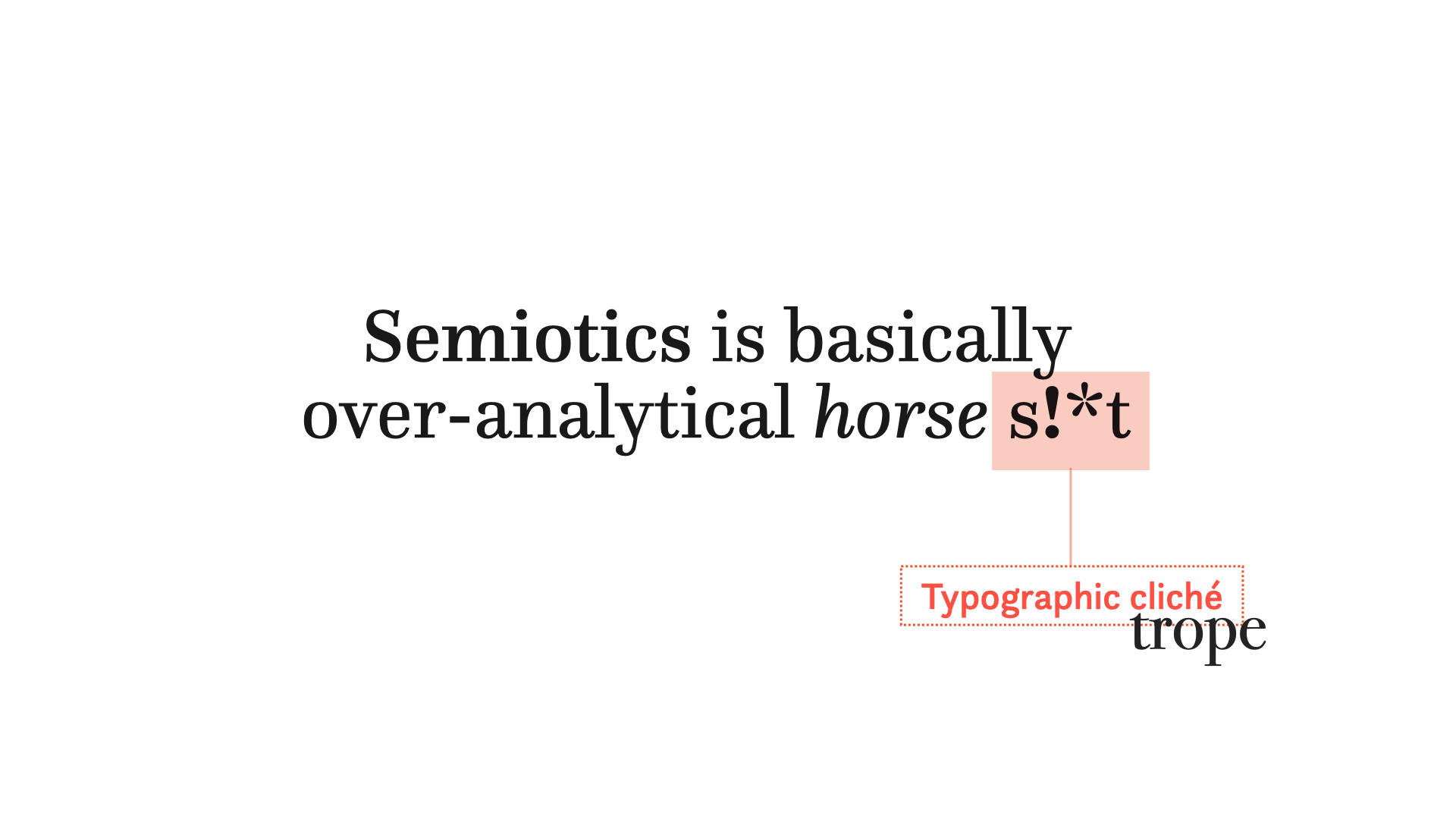This is a reflection on an old lecture I delivered, discussing the conventions in signified ‘meaning’ behind visual media, art direction, and communication in general.
What do you see? What do you hear? What do you feel? The connection between the aesthetic and creative choices across all forms of communication, where we can convey powerful messages by loading associative meaning behind and beyond the literal surface value, is the realm of semiotics. I delivered the above presentation deck and lecture while working in a design school some years ago, and looking at it now – aside from thinking ‘what the hell was I thinking’ on how these slides could look a lot slicker, or that the case studies could be more current, I feel it still represents a decent summary introduction to the process of semiotic deconstruction in visual media. (FYI scrolling through, the format lends itself better to a larger screen).

A great deal of effort and expertise – that most audiences never consider – is poured into the building of consumer goods brands, fashion collections, music video production, the casting of models or actors, or indeed any creative realm where a narrative context is in play. Content is often taken at face value, consumed, gazed upon for a matter of seconds, and a judgement made over whether it appeals or not. Looking at these face value signs is often enough to form an opinion, but the most powerful imagery and lasting impact is created by working toward what is signified beyond what we see and hear, with audiences or viewers rarely decoding, questioning why or how they resonate so deeply.
Why has Hollywood for so long equated a well-groomed, lean, tight-lipped Englishman with the nefarious bad guy? How does a careful choice of typography make people either want to ‘come on in’, or run for their lives? How does a fashion model’s body language or facial expression give you a sense of empowerment and relatability, or create a feeling of profound inferiority and desire to ‘be a better you’?
As time moves on we become ever more sophisticated as audiences, consumers, voters. Demanding more powerful meaning in everything we see, hear and touch. Being able to tap into subconscious or cultural and experiential feeling, and pack this all into a tagline, visual composition, brand essence, or indeed any other non-commercial mode of storytelling, is a critical part of transmitting messages that connect with people. Of course an entire industry is beavering away to find more accurate means of garnering public attitudes, tastes, and desires to leverage into engagement that ‘converts’ or guides behaviour, but a firm grasp of how to build deeper meaning beyond the surface notes is where the game is won or lost.
Over-analytical horse-shit it may be to some, but if a message needs to bring about change; whether that is to convince someone to throw down on a new car, insurance plan, a-n-other smart gadget, or indeed somewhat more ambitiously, embracing new socio-political, or cultural behaviour, then the time spent understanding, interpreting and building signified and implied meaning beyond the simple face value signs presented in any piece of communication is time very well spent.
